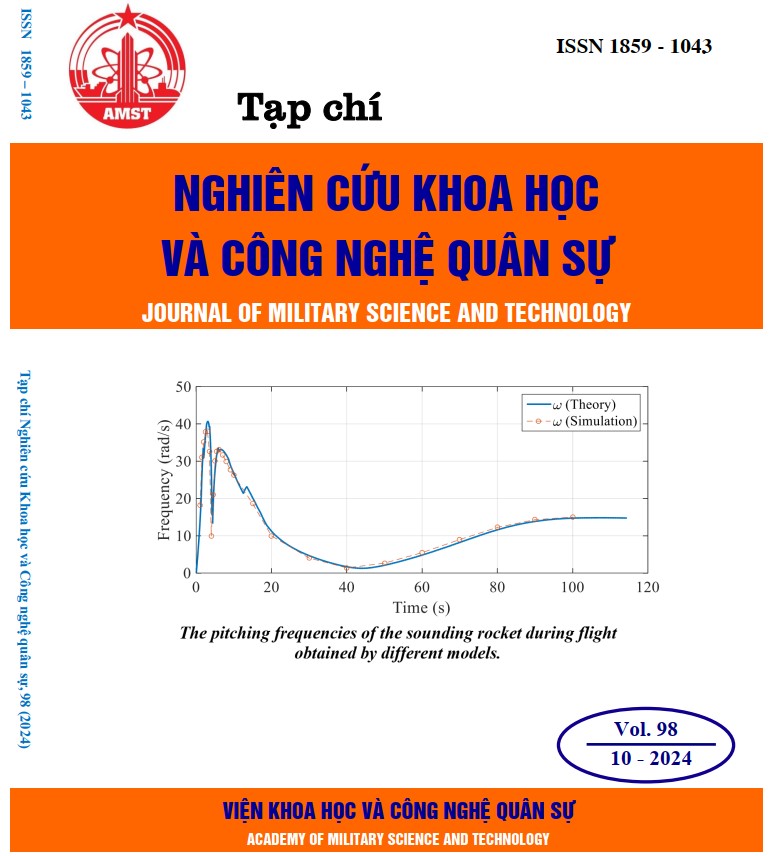Comparative greenhouse gas emissions inventory in Hau Giang province: Projections to 2030 and 2050
450 viewsDOI:
https://doi.org/10.54939/1859-1043.j.mst.98.2024.86-93Keywords:
Greenhouse gas emissions; IPCC; Climate change; Strategic environmental assessment.Abstract
Greenhouse gas (GHG) emissions are the primary cause of climate change, making the calculation and projection of GHG emissions in Vietnam mandatory in the Strategic Environmental Assessment (SEA) for strategies and plans, including adjusted plans. This study, therefore, forecasts GHG emissions levels up to 2030 and 2050 following the guidelines of the Intergovernmental Panel on Climate Change (IPCC) 2019 and 1996 versions, applied to the SEA of Hau Giang province’s Master Plan. The results are compared with the updated Nationally Determined Contributions (NDC) of 2022 and the Mekong Delta Regional Plan, aiming to provide a scientific basis for climate change mitigation strategies at both local and national levels, contributing to the goal of net-zero emissions.
References
[1]. IPCC, “Climate Change 2021: The Physical Science Basis”. Contribution of Working Group I to the Sixth Assessment Report of the Intergovernmental Panel on Climate Change [Masson-Delmotte, V., P. Zhai, A. Pirani, S. L. Connors, C. Péan, S. Berger, N. Caud, Y. Chen, L. Goldfarb, M. I. Gomis, M. Huang, K. Leitzell, E. Lonnoy, J.B.R. Matthews, T. K. Maycock, T. Waterfield, O. Yelekçi, R. Yu and B. Zhou (eds.)], Cambridge University Press. In Press, (2021).
[2]. WMO, “Bản tin về KNK của Tổ chức Khí tượng Thế giới (WMO)”, (2021), https://public.wmo.int/en/media/press-release/greenhouse-gas-bulletin-another-year-another-record.
[3]. Bộ Tài nguyên và Môi trường, “Báo cáo cập nhật hai năm một lần Lần thứ ba Gửi Công ước Khung của Liên Hợp Quốc về Biến đổi khí hậu”, (2020).
[4]. Chính phủ, “Quyết định số 952/QĐ-TTg ngày 03 tháng 7 năm 2020 của Thủ tướng Chính phủ V/v Phê duyệt Nhiệm vụ lập Quy hoạch tỉnh Hậu Giang thời kỳ 2021-2030, tầm nhìn đến năm 2050”, (2020).
[5]. Đài Khí tượng Thủy văn khu vực Nam Bộ, “Số liệu khí tượng thủy văn tỉnh Hậu Giang giai đoạn 2014 – 2018”.
[6]. IPCC, “The Revised 1996 IPCC Guidelines for National Greenhouse Gas Inventories”, (1996).
[7]. IPCC, “2019 Refinement to 2006 IPCC Guidelines for National GHG Inventories”, (2019).
[8]. IPCC, “2006 IPCC Guidelines for National GHG Inventories”, (2006).
[9]. IPCC, “Climate Change 2013: The Physical Science Basis. Contribution of Working Group I to the Fifth Assessment Report of the Intergovernmental Panel on Climate Change” [Stocker, T.F., D. Qin, G.-K. Plattner, M. Tignor, S.K. Allen, J. Boschung, A. Nauels, Y. Xia, V. Bex and P.M. Midgley (eds.)], Cambridge University Press, Cambridge, United Kingdom and New York, NY, USA, 1535 pp, (2013).
[10]. IPCC, “Good Practice Guidance for Land Use, Land-Use Change and Forestry”, (2003).
[11]. https://www.ipcc.ch/2019/05/08/p49-opening-2019-refinement/
[12]. Center for International Forestry Research (CIFOR) - Tổng cục Lâm nghiệp, Báo cáo “Kết quả thực hiện Chiến lược phát triển Lâm nghiệp Việt Nam giai đoạn 2006-2020 và đề xuất nội dung Chiến lược phát triển Lâm nghiệp Việt Nam giai đoạn 2021–2030, tầm nhìn đến năm 2050”, (2020).
[13]. Sở Kế hoạch và Đầu tư tỉnh Hậu Giang, “Báo cáo Quy hoạch tỉnh Hậu Giang thời kỳ 2021-2030, tầm nhìn đến năm 2050”, (2023).
[14]. Bộ Kế hoạch và Đầu tư, “Báo cáo Đánh giá môi trường chiến lược Quy hoạch vùng Đồng bằng sông Cửu Long thời kỳ 2021 – 2030, tầm nhìn đến năm 2050”, Tư vấn GIZ (do Viện Khoa học Môi trường và Phát triển thực hiện) trong Liên danh Royal HaskoningDHV Nerderland –GIZ, (2021).
[15]. “Báo cáo Đóng góp do quốc gia tự quyết định (NDC) của Việt Nam”, Hà Nội, (2022).







